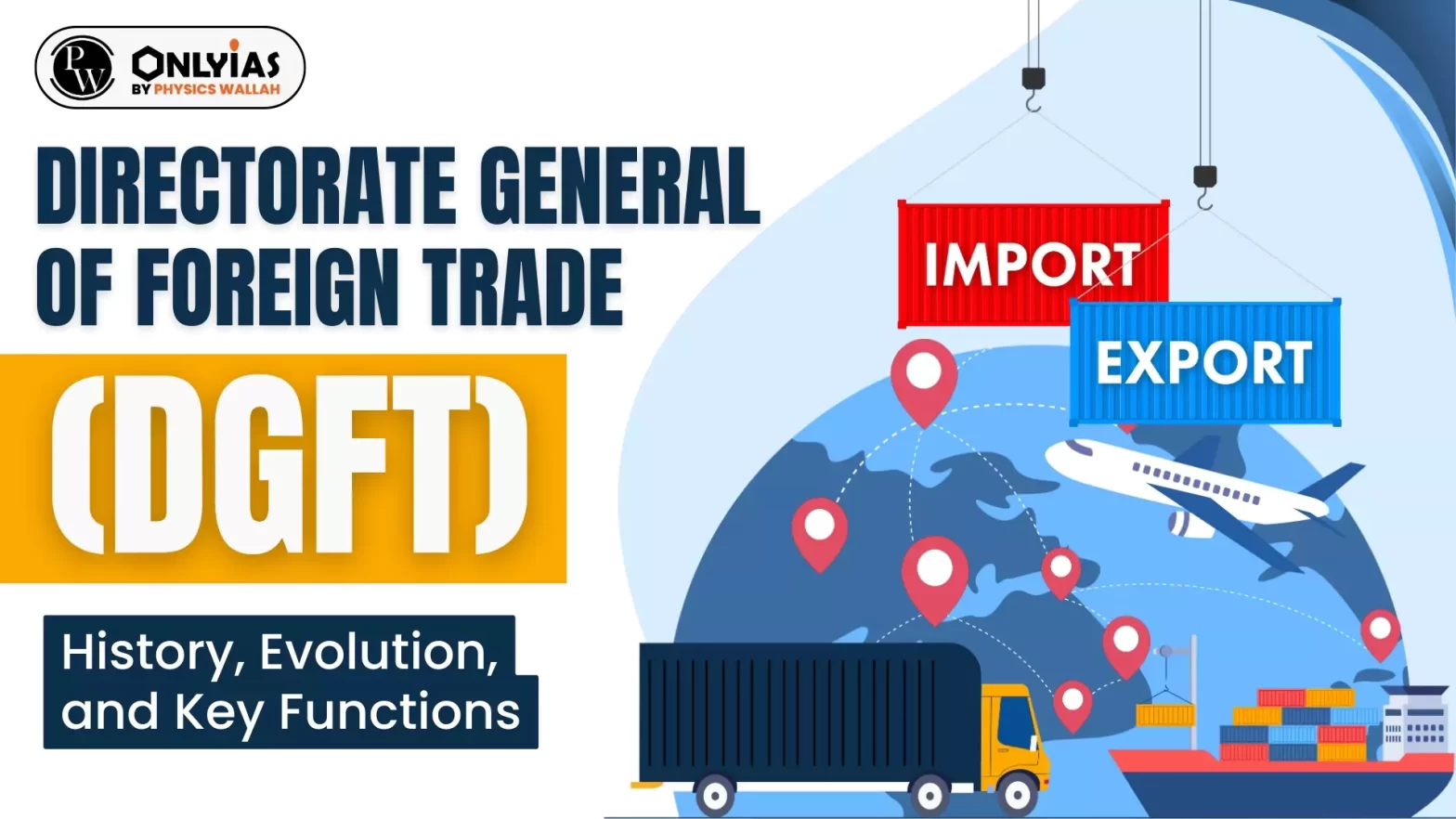Discover DGFT's role in shaping India's foreign trade. Explore history, functions, schemes & more for a comprehensive understanding.

Directorate General of Foreign Trade (DGFT) is a government agency that regulates imports and exports in India. The DGFT is responsible for formulating a country’s foreign trade policy and promoting export and import trade. By providing trade-related information and promoting special economic zones, DGFT aims to increase exports of the country.
| Must Read | |
| NCERT Notes For UPSC | UPSC Daily Current Affairs |
| UPSC Blogs | UPSC Daily Editorials |
| Daily Current Affairs Quiz | Daily Main Answer Writing |
| UPSC Mains Previous Year Papers | UPSC Test Series 2024 |
Directorate General of Foreign Trade (DGFT) is a government agency that regulates imports and exports in India.
The office of Directorate General of Foreign Trade (DGFT) comes under the Ministry of Commerce and Industry.
The headquarters of the Directorate General of Foreign Trade (DGFT) is located in New Delhi and headed by the Director General of Foreign Trade.
To promote exports of Indian goods and services by sharing information and guidance to exporters.
The DGFT is responsible for formulating a country's foreign trade policy and promoting export and import trade.

<div class="new-fform">
</div>